#Battle of Lepanto
Photo
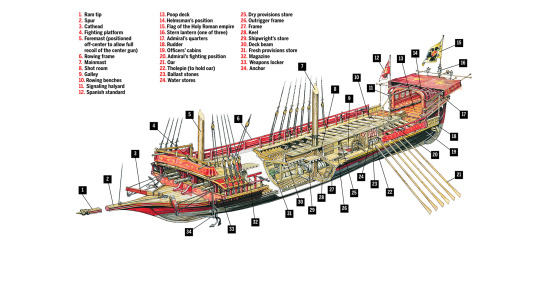
The depicted Spanish galley of the Holy League fleet is of the type used at the 1571 Battle of Lepanto, the last large-scale naval battle fought between the rowed warships. Illustration by Tony Bryan, from Renaissance War Galley, 1470–1590, by Angus Konstam
#naval history#war galley#spanish#battle of lepanto#1571#beginning of the age of sail#please enlarge it to see the real quality of it
117 notes
·
View notes
Photo
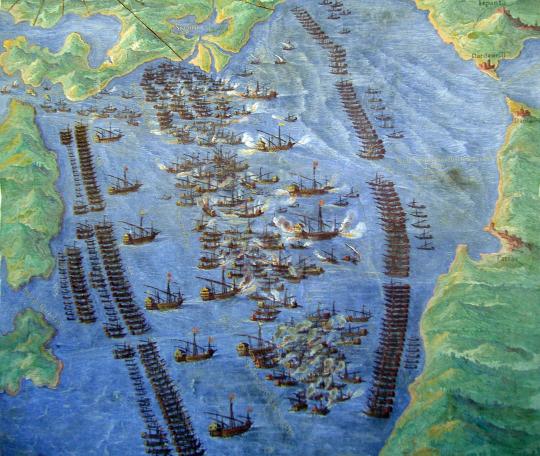
The Battle of Lepanto, from the Vatican Gallery of Maps.
174 notes
·
View notes
Text
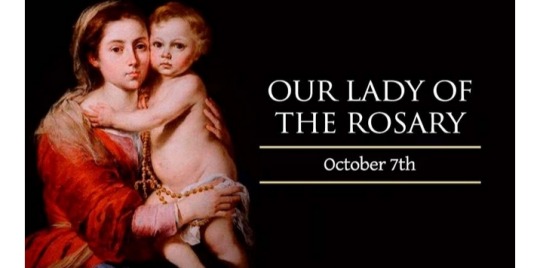
On October 7, the Roman Catholic Church celebrates the yearly feast of Our Lady of the Rosary.
Known for several centuries by the alternate title of “Our Lady of Victory,” the feast day takes place in honor of a 16th-century naval victory, which secured Europe against Turkish invasion.
Pope St. Pius V attributed the victory to the intercession of the Blessed Virgin Mary, who was invoked on the day of the battle through a campaign to pray the Rosary throughout Europe.
The feast always occurs one week after the similar Byzantine celebration of the Protection of the Mother of God, which most Eastern Orthodox Christians and Eastern Catholics celebrate on October 1 in memory of a 10th-century military victory, which protected Constantinople against invasion after a reported Marian apparition.
Pope Leo XIII was particularly devoted to Our Lady of the Rosary, producing 11 encyclicals on the subject of this feast and its importance in the course of his long pontificate.
In the first of them, 1883's “Supremi Apostolatus Officio,” he echoed the words of the oldest known Marian prayer (known in the Latin tradition as the “Sub Tuum Praesidium”), when he wrote:
“It has always been the habit of Catholics in danger and in troublous times to fly for refuge to Mary."
“This devotion, so great and so confident, to the august Queen of Heaven,” Pope Leo continued, “has never shone forth with such brilliancy as when the militant Church of God has seemed to be endangered by the violence of heresy … or by an intolerable moral corruption, or by the attacks of powerful enemies.”
Foremost among such “attacks” was the Battle of Lepanto, a perilous and decisive moment in European and world history.
Troops of the Turkish Ottoman Empire had invaded and occupied the Byzantine empire by 1453, bringing a large portion of the increasingly divided Christian world under a version of Islamic law.
For the next hundred years, the Turks expanded their empire westward on land and asserted their naval power in the Mediterranean.
In 1565, they attacked Malta, envisioning an eventual invasion of Rome. Though repelled at Malta, the Turks captured Cyprus in the fall of 1570.
The next year, three Catholic powers on the continent – Genoa, Spain, and the Papal States - formed an alliance called the Holy League, to defend their Christian civilization against Turkish invasion.
Its fleets sailed to confront the Turks near the west coast of Greece on 7 October 1571.
Crew members on more than 200 ships prayed the Rosary in preparation for the battle — as did Christians throughout Europe, encouraged by the Pope to gather in their churches to invoke the Virgin Mary against the daunting Turkish forces.
Some accounts say that Pope Pius V was granted a miraculous vision of the Holy League's stunning victory.
Without a doubt, the Pope understood the significance of the day's events, when he was eventually informed that all but 13 of the nearly 300 Turkish ships had been captured or sunk.
He was moved to institute the feast now celebrated universally as Our Lady of the Rosary.
“Turkish victory at Lepanto would have been a catastrophe of the first magnitude for Christendom,” wrote military historian John F. Guilmartin, Jr., “and Europe would have followed a historical trajectory strikingly different from that which obtained.”
#Feast of Our Lady of the Rosary#Our Lady of Victory#Our Lady of the Rosary#Battle of Lepanto#Holy League
7 notes
·
View notes
Note
There seems to be some historical disagreement on the importance of the battle of Lepanto. Some say it was inconsequential and others claim it to be highly decisive. Where do you come down on this topic? Thanks a lot
I think the biggest impact of Lepanto was not that it stopped Ottoman imperial or naval ambitions (it didn't), or even that it was the biggest Ottoman defeat (that would be Malta six years earlier), but rather that the economics of naval warfare began to push naval technology firmly away from galley and galley-type vessels and that spending so much blood and treasure contesting the Mediterranean was an ineffective use of national resources.
Thanks for the question, Anon.
SomethingLikeALawyer, Hand of the King
8 notes
·
View notes
Text
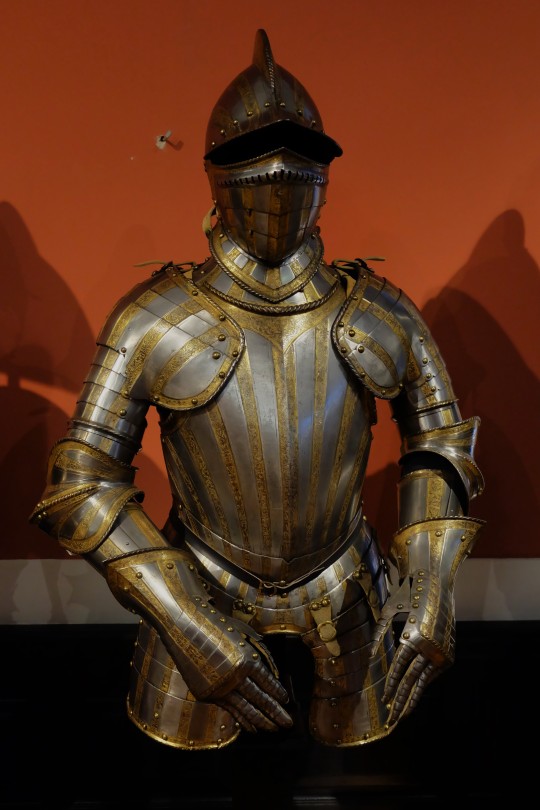
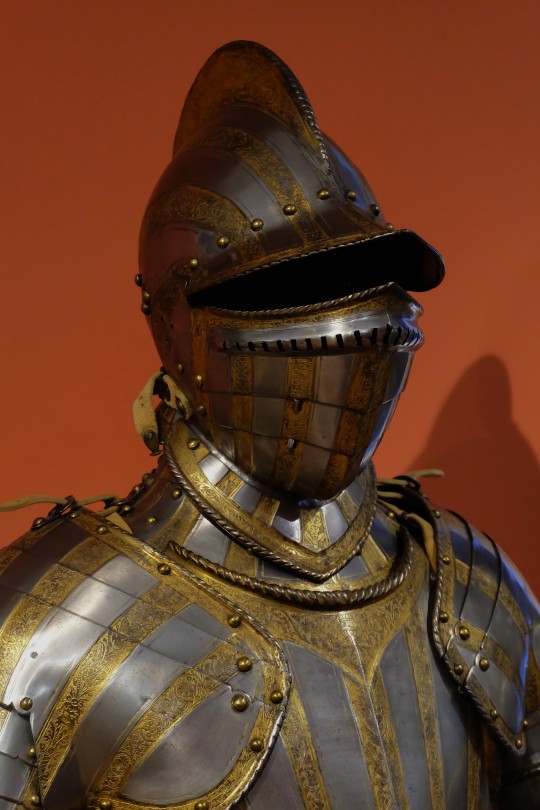
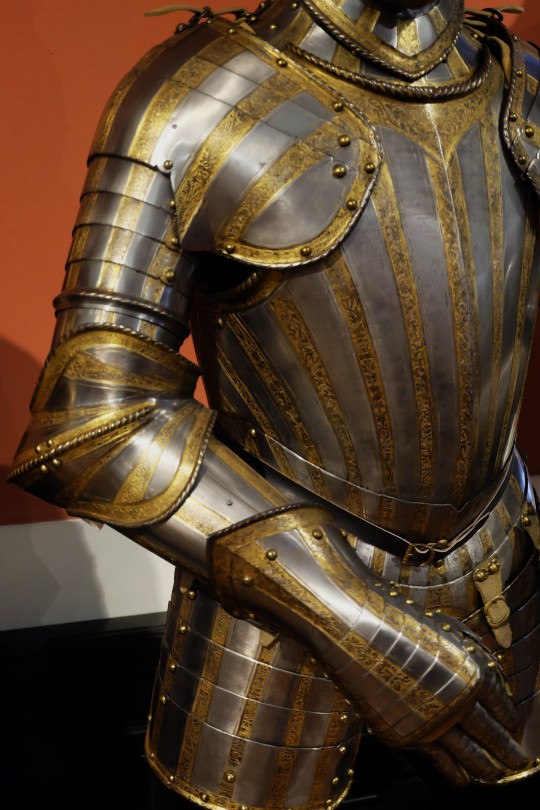
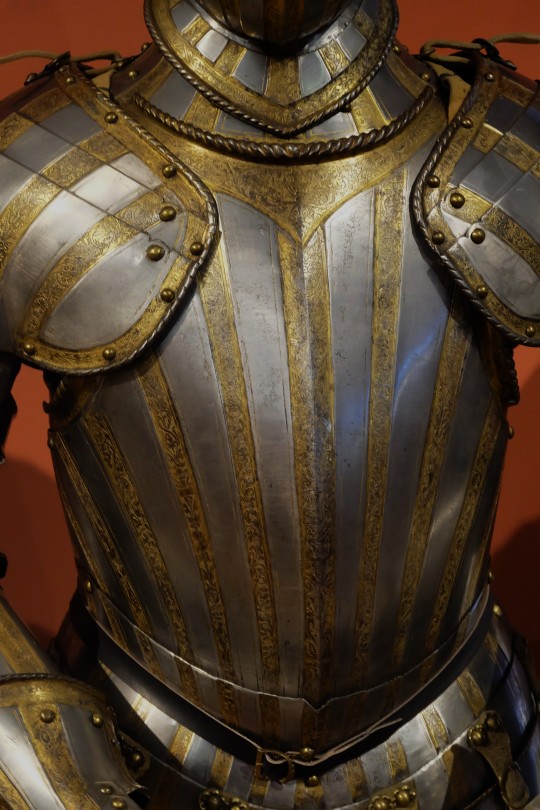
Armour of Sebastiano Venier, Doge of Venice, from Brescia, Italy dated to 1540 on display at the Weltmuseum in Vienna, Austria
Sebastiano Venier started his career in the Repulic of Venice a a lawyer despite not having any official qualifications. He would fight in the Ottoman-Venetian War (1537 - 1540) and rise up through the ranks in the government. In 1570 he would be appointed as Procurator of Saint Mark, patron saint of the Republic, and as Capitano Generale da Mar, Captain General of the Sea, commander of the Venetian Fleet.
He would lead the fleet at the Battle of Lepanto alongside the Republic's allies against the Ottoman Empire. After the victory against the Ottoman's he would return to Venice where he was elected Doge, leader of the republic.
Photographs taken by myself 2022
#armour#armor#military history#battle of lepanto#italy#italian#republic of venice#renaissance#art#fashion#16th century#weltmuseum#vienna#barbucomedie
3 notes
·
View notes
Text
CADAQUÉS AND THE BATTLE OF LEPANTO
Shrine to Saint Pius V
On a day with fast winds and the sun low in the sky, 450 warships clashed in bloody combat in the Battle of Lepanto. It was 7 October 1571, the last major sea battle fought almost entirely between rowing vessels.
Moving westward from the navy base in the Gulf of Corinth, the fleet of the Ottoman Empire consisted of 222 galleys and 56 galliots commanded by Müezzinzade Ali…
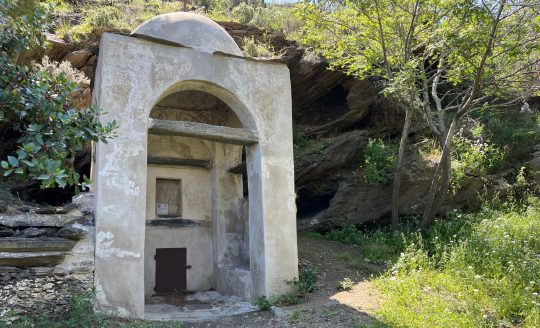
View On WordPress
0 notes
Text
The Holy League Defeated the Ottoman Empire at the Battle of Lepanto in a Significant Naval Engagement During the Ottoman-Habsburg Wars. October 7, 1571
Image: The Battle of Lepanto, Paolo Veronese (Public Domain)
On this day in history, October 7, 1571, The Holy League defeated the Ottoman Empire at the Battle of Lepanto in a significant naval engagement during the Ottoman-Habsburg Wars.
The Battle of Lepanto was a naval action that occurred on October 7, 1571, when an armada of the Holy League, a federation of Catholic nations (including…
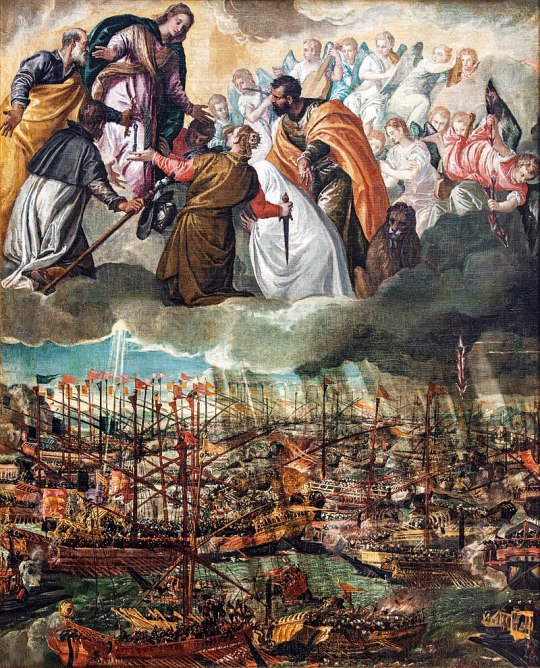
View On WordPress
0 notes
Text
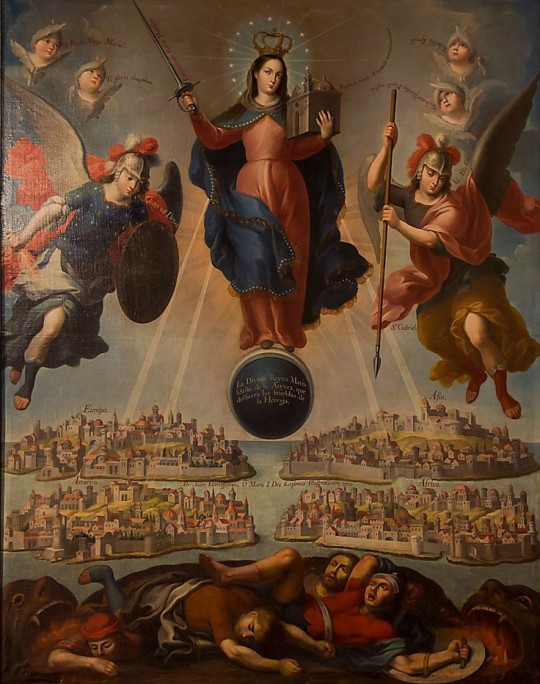
A renaissance era Catholic religious art image of Our Lady of Loretto. I don't know who the artist is.
#traditional catholicism#traditional catholic images#traditional catholic renaissance religious art#traditional catholic marian devotion#traditional catholic marian images#the blessed virgin mary#traditional catholic marian apparitions#our lady of loretto#traditional catholic history#the battle of lepanto
9 notes
·
View notes
Text
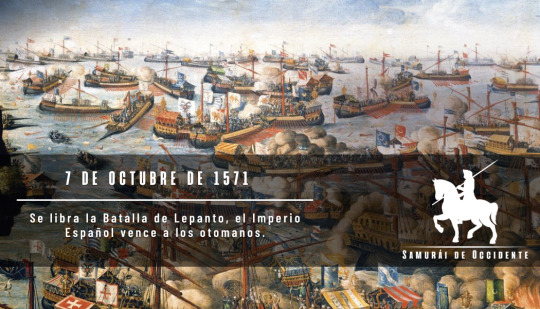
📅 Efeméride | Se libra la Batalla de Lepanto, el Imperio Español vence a los otomanos.
► Samurái de Occidente:
#europe#occidente#samurai#europa#aesthetic#españa#masculine#identity#europeans#lepanto#batalla#battle#ship stuff#barcos#naval history#spanish#imperio#heroism#hero#héroes#efemerides#memoria histórica#recuerdos#remember#war#guerra#piratas#pirates#turquia#dominique venner
7 notes
·
View notes
Text
youtube
Happy feast of our Lady of the Rosary!
1 note
·
View note
Video
youtube
The Battle of Lepanto in 1571 — Shattering the Idea of Ottoman Invicibility
from SandRhoman History
40 notes
·
View notes
Photo



Spain,Venice&Ottoman maybe in Kostantiniyye before battle of Lepanto? (a Mediterranean sandwich maybe:D
#aph spain#aph turkey#aph ottoman#aph venice#antonio fernandez carriedo#sadiq adnan#hetalia oc#aph#hws
2K notes
·
View notes
Text
Feast of Our Lady of the Rosary
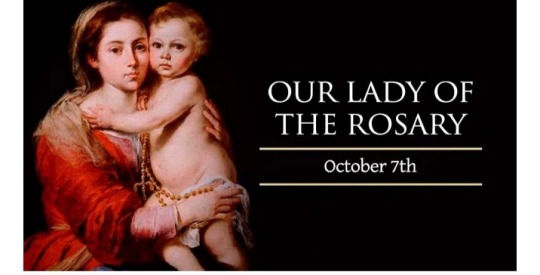
On October 7, the Roman Catholic Church celebrates the yearly feast of Our Lady of the Rosary.
Known for several centuries by the alternate title of “Our Lady of Victory,” the feast day takes place in honor of a 16th century naval victory, which secured Europe against Turkish invasion.
Pope St. Pius V attributed the victory to the intercession of the Blessed Virgin Mary, who was invoked on the day of the battle through a campaign to pray the Rosary throughout Europe.
The feast always occurs one week after the similar Byzantine celebration of the Protection of the Mother of God, which most Eastern Orthodox Christians and Eastern Catholics celebrate on October 1.
This is in memory of a 10th-century military victory, which protected Constantinople against invasion after a reported Marian apparition.
Pope Leo XIII was particularly devoted to Our Lady of the Rosary, producing 11 encyclicals on the subject of this feast and its importance in the course of his long pontificate.
In the first of them, 1883's “Supremi Apostolatus Officio,” he echoed the words of the oldest known Marian prayer (known in the Latin tradition as the “Sub Tuum Praesidium”), when he wrote:
“It has always been the habit of Catholics in danger and in troublous times to fly for refuge to Mary.”
“This devotion, so great and so confident, to the august Queen of Heaven,” Pope Leo continued, “has never shone forth with such brilliancy as when the militant Church of God has seemed to be endangered by the violence of heresy … or by an intolerable moral corruption, or by the attacks of powerful enemies.”
Foremost among such 'attacks' was the Battle of Lepanto, a perilous and decisive moment in European and world history.
Troops of the Turkish Ottoman Empire had invaded and occupied the Byzantine empire by 1453, bringing a large portion of the increasingly divided Christian world under a version of Islamic law.
For the next hundred years, the Turks expanded their empire westward on land and asserted their naval power in the Mediterranean.
In 1565, they attacked Malta, envisioning an eventual invasion of Rome. Though repelled at Malta, the Turks captured Cyprus in the fall of 1570.
The next year, three Catholic powers on the continent – Genoa, Spain, and the Papal States - formed an alliance called the Holy League, to defend their Christian civilization against Turkish invasion.
Its fleets sailed to confront the Turks near the west coast of Greece on 7 October 1571.
Crew members on more than 200 ships prayed the Rosary in preparation for the battle - as did Christians throughout Europe, encouraged by the Pope to gather in their churches to invoke the Virgin Mary against the daunting Turkish forces.
Some accounts say that Pope Pius V was granted a miraculous vision of the Holy League's stunning victory.
Without a doubt, the Pope understood the significance of the day's events, when he was eventually informed that all but 13 of the nearly 300 Turkish ships had been captured or sunk.
He was moved to institute the feast now celebrated universally as Our Lady of the Rosary.
“Turkish victory at Lepanto would have been a catastrophe of the first magnitude for Christendom,” wrote military historian John F. Guilmartin, Jr., “and Europe would have followed a historical trajectory strikingly different from that which obtained.”
#Feast of Our Lady of the Rosary#Our Lady of Victory#Pope St. Pius V#Pope Leo XIII#Constantinople#Battle of Lepanto#Holy League#Pope Pius V#Blessed Virgin Mary
15 notes
·
View notes
Text
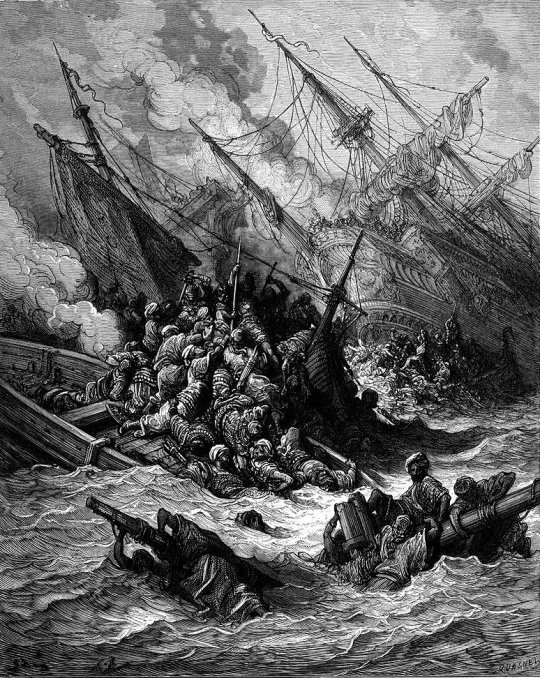
-Battle of Lepanto in 1571-
62 notes
·
View notes
Text

Pope Saint Pius V
1504-1572
Feast Day: April 30 (New), May 5 (Trad)
Patronage: Bosco Marengo, Italy
Pope from 1566-1572
Saint Pope Pius V, a Dominican, was a leader of the Catholic Reformation, especially by implementing the Council of Trent reforms. He established a Catechism, a missal, a seminary system, used a Tridentine approach to learning and preaching, had a residency requirement for Bishops and reformed women’s religious life. This formed the foundation of the Catholic Church for the next 500 years. In 1571, St. Pius V was instrumental in gathering a coalition of nations and petitioning prayers of Our Blessed Mother to save Europe from the Islamic Ottoman Turks at the Battle of Lepanto. He declared Mary as Our Lady of Victory because of this decisive battle. He died of natural causes.
Prints, plaques & holy cards available for purchase here: (website)
18 notes
·
View notes